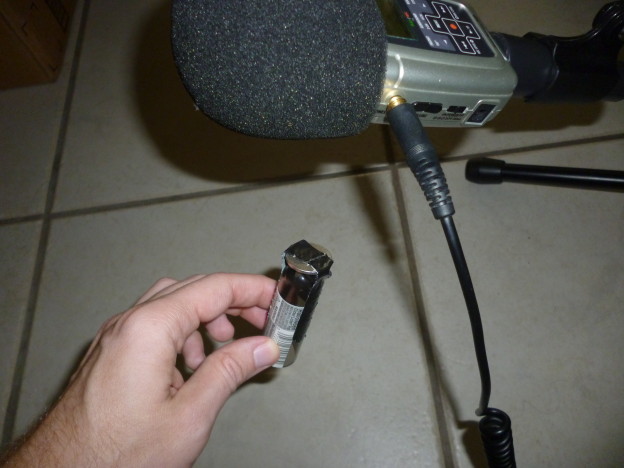My folks got me a Cold Gold hydrophone for my birthday last weekend and I’ve been having fun playing with it over the past few days.
In this example, the first two recordings are in my bathtub, the last are from a metal soup pot in my kitchen sink. I now know that there is a slow leak in the drain of my tub.
In addition, this type of hydrophone works well as a contact mic. I tried taping it to a metal barbell and a wooden drumstick. Both were tapped and bowed like a violin using various materials near at hand.
For my Cube sound replacement project, my biggest shortfall so far has been not being able to find empty shotgun shells, or even any impact sounds from a library that would satisfy. My quest today has been to try and replicate it using household items.
I recorded various pen caps, spray can lids, measuring scoops, and finally, the plastic tube from a candy whistle. Here is a shootout of the various items:
Audio Player
The candy tube seemed like the closest bet as I was recording, but it was missing the metallic impact from when a shell casing is dropped on the brass end, near the primer. I decided to tape a nickle to the end of the tube to see if that would get me in the neighborhood.
After listening to recordings, however, the back end of the weighted candy tube didn’t bounce like a proper shell. The solution was to splice the elements together. With a few steps worth of pitch shifting, the sharpie lid seemed to have the right tone and number of bounces compared to the source recordings.
On the implementation side, I decided to use separate playlists for the initial impacts and the bounces. This way, I didn’t have to splice together the nickle-weighted candy tube and sharpie recordings, not to mention the bigger possibilities for randomization within the sound engine. I combined the best impacts from each category into its own .wav file, duplicated them and set the start and end points within Wwise thusly.
Here is a video of the revised shotgun shell implementation in action.





